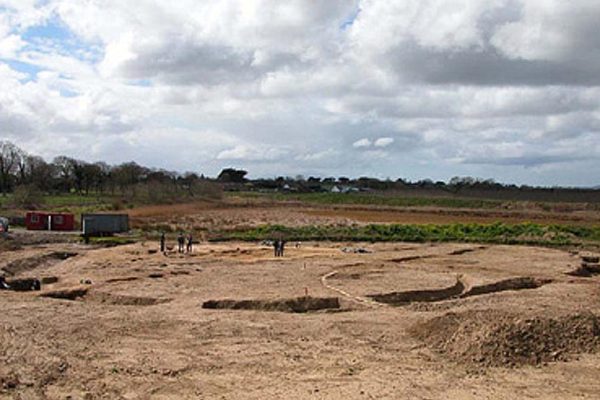Clogher, Lixnaw, County Kerry


Enclosure with inhumations
Excavation Q0895/1294 RMP –
Licence Number: 04E0356
Numerous features were identified during licenced archaeological monitoring and test trenching (03E1485) of a Kerry County Council housing development at Clogher, by Eachtra Archaeological Projects. The site was subsequently excavated by Aegis Archaeology Limited in March and April 2004. The site was enclosed by an outer ditch, which was approximately 3-4m wide, 1m deep, and enclosed an area 52.5m north-south by 52m. The ditch ran into the western edge of the excavation and therefore the full east/west extent is not known, although it is likely to be approximately 70.0m. It is assumed that the entrance lay outside of the excavated area to the west, as there no entrance was visible on the site. A sequence of fills was evident throughout the length of the ditch. This large ditch cut an earlier smaller circular ditch which measured 1.4m in width, 0.65m in depth, enclosing an area 21.0m east-west by 10.0m.
Twenty graves containing the remains of at least twenty-one individuals were identified just to the south of the centre of the site. A further ten possible grave cuts were excavated, but no bone survived in the fills. All graves were contained within the area of the larger ditch. The skeletal remains were in a very poor state of preservation. The graves were primarily orientated west/east, with one exception. In addition, a large number of linear features crossed the site. These appear to have been associated with later agricultural activity on the site, particularly relating to the use of the site as a domestic garden. A number of pits, postholes, and other isolated features were scattered across the site. The majority of these were sterile deposits of unknown functions and no structures could be identified from the postholes. Two other features were identified to the northeast of the enclosed site. These were a possible metal-working pit and a keyhole-shaped kiln, although no diagnostic finds were recovered. However, initial analysis suggests that this site may date from the late Iron Age/Early Medieval transition period.
This site is included in the following publication: Collins, T. and Coyne, F. 2007 Shape-shifting: enclosures in the archaeological landscape, in C. Manning (ed.) From Ringforts to Fortified Houses: studies on castles and other monuments in honour of David Sweetman. Dublin: Wordwell, 21-32.
